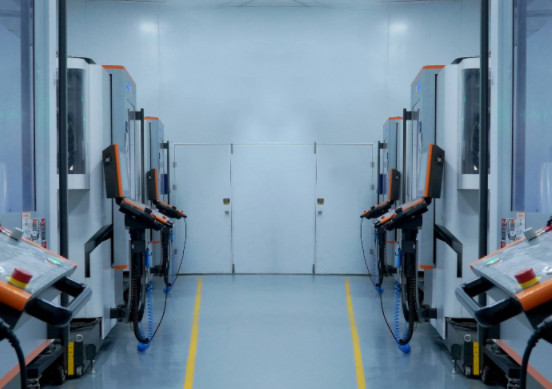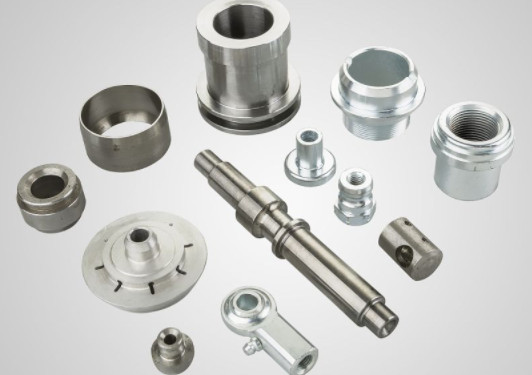Rapid CNC machining is a high-speed, subtractive manufacturing process that uses computer-controlled machines to create precise parts from various materials. It is widely used for prototyping and low-volume production in industries such as aerospace, automotive, medical, and electronics. This guide provides a detailed overview of rapid CNC machining, including its processes, materials, tolerances, applications, and key considerations for achieving optimal results.
What is Rapid CNC Machining?
Rapid CNC machining refers to a streamlined version of Computer Numerical Control (CNC) machining, optimized for speed without compromising precision. Unlike traditional machining, which may involve lengthy setup and programming, rapid CNC machining focuses on efficiency through advanced software, automation, and optimized workflows. The process starts with a digital design, typically created in CAD (Computer-Aided Design) software, which is converted into machine instructions via CAM (Computer-Aided Manufacturing) software. These instructions guide CNC machines to cut, drill, or shape raw materials into finished parts with tolerances as tight as ±0.01 mm.
The "rapid" aspect comes from minimizing lead times through faster programming, modular fixturing, and high-speed spindles. This makes it ideal for producing prototypes, small-batch parts, or urgent components. Rapid CNC machining supports a wide range of materials, from metals like aluminum and stainless steel to plastics like ABS and Delrin, making it versatile for various applications.
Key Processes in Rapid CNC Machining
Rapid CNC machining encompasses several core processes, each suited to specific part geometries and production needs. The two primary methods are CNC milling and CNC turning, with additional techniques like drilling and grinding used as needed.
CNC Milling
CNC milling involves a rotating cutting tool that removes material from a stationary workpiece. It is ideal for creating complex shapes, slots, and flat surfaces. Rapid CNC milling uses 3-axis, 4-axis, or 5-axis machines, with 5-axis systems offering the ability to machine intricate geometries in a single setup. Typical parameters include spindle speeds of 10,000–30,000 RPM and feed rates of 5–20 m/min, depending on material and tool type.
CNC Turning
CNC turning rotates the workpiece while a stationary tool shapes it, making it suitable for cylindrical parts like shafts or bolts. Rapid CNC turning employs high-speed lathes with spindle speeds up to 6,000 RPM and feed rates of 0.1–0.5 mm/rev. This process excels in producing symmetrical components with smooth finishes.
Other Processes
Additional processes like drilling, boring, and tapping are often integrated into rapid CNC workflows. For example, drilling can achieve hole tolerances of ±0.05 mm, while tapping creates precise threads for fasteners. These processes are optimized for speed by using high-performance tools and automated tool changes.
Materials Used in Rapid CNC Machining
Material selection is critical in rapid CNC machining, as it affects machining speed, tool wear, and part performance. The following table outlines common materials, their properties, and typical applications:
| Material | Properties | Applications | Machinability |
|---|---|---|---|
| Aluminum (6061, 7075) | Lightweight, corrosion-resistant, high strength-to-weight ratio | Aerospace components, enclosures, brackets | High |
| Stainless Steel (304, 316) | High strength, corrosion-resistant, durable | Medical devices, hardware, marine parts | Moderate |
| ABS Plastic | Impact-resistant, cost-effective, lightweight | Consumer products, prototypes | High |
| Delrin (POM) | Low friction, high stiffness, dimensionally stable | Gears, bearings, precision components | High |
| Titanium | High strength, lightweight, corrosion-resistant | Aerospace, medical implants | Low |
Material choice depends on the part’s functional requirements, such as strength, weight, or environmental resistance. For rapid CNC machining, materials with high machinability, like aluminum and ABS, are preferred to reduce cycle times and tool wear.
Tolerances and Precision in Rapid CNC Machining
Precision is a hallmark of rapid CNC machining, with standard tolerances ranging from ±0.05 mm to ±0.01 mm for general applications. High-precision parts, such as those for aerospace or medical devices, can achieve tolerances as tight as ±0.002 mm, though this may increase costs due to slower machining and specialized tooling. Key factors influencing tolerances include:
- Machine Calibration: Regular calibration ensures linear and rotational accuracy.
- Tool Quality: Carbide tools with coatings like TiAlN reduce wear and maintain precision.
- Material Properties: Softer materials like aluminum allow faster cutting with consistent tolerances, while harder materials like titanium require slower speeds.
- Programming Accuracy: Advanced CAM software optimizes toolpaths to minimize errors.
Real-time feedback systems, such as laser probes, further enhance precision by adjusting parameters during machining. For rapid workflows, balancing tight tolerances with speed is critical to avoid unnecessary delays.
Applications of Rapid CNC Machining
Rapid CNC machining serves a variety of industries and use cases, leveraging its speed and precision to meet specific needs. Below are the primary applications:
Rapid Prototyping
Rapid CNC machining is widely used for creating functional prototypes that mimic the final product’s material and performance. Unlike 3D printing, CNC-machined prototypes offer accurate mechanical properties, making them ideal for testing fit, form, and function. For example, a prototype aluminum housing can be machined in 1–3 days to validate design before mass production.
Small-Batch Production
For quantities ranging from 10 to 1,000 parts, rapid CNC machining provides a cost-effective alternative to injection molding or casting, which require expensive tooling. It is commonly used for custom components in robotics, automotive, or consumer electronics, with lead times as short as 3–7 days.
Custom Tooling and Fixtures
Rapid CNC machining produces custom jigs, fixtures, and assembly aids to streamline production. For instance, a custom aluminum fixture can be machined in 24–48 hours to support assembly line efficiency.
Spare Parts Manufacturing
When equipment downtime is costly, rapid CNC machining delivers replacement parts quickly. Reverse-engineered components, such as stainless steel gears, can be produced in 2–5 days to minimize operational delays.
Design Considerations for Rapid CNC Machining
Effective design is crucial for maximizing the benefits of rapid CNC machining. The following guidelines ensure manufacturability and efficiency:
- Simplify Geometry: Avoid deep pockets or thin walls, which increase machining time and tool wear. Use internal corner radii of at least 1 mm to reduce stress concentrations.
- Standardize Features: Use standard hole sizes (e.g., 3 mm, 6 mm) and thread types (e.g., M6, M8) to minimize tool changes and speed up production.
- Optimize Workholding: Design parts with flat surfaces or clamp-friendly features to simplify fixturing. This reduces setup time and ensures stability during machining.
- Specify Tolerances Judiciously: Apply tight tolerances (e.g., ±0.01 mm) only to critical features like mating surfaces to avoid unnecessary costs.
Collaboration with machinists during the design phase can further streamline the process, ensuring designs are optimized for rapid production.

Comparison of Rapid CNC Machining with Other Methods
Rapid CNC machining is often compared to other manufacturing methods like 3D printing or injection molding. The table below summarizes key differences:
| Method | Speed | Precision | Material Options | Best Use Case |
|---|---|---|---|---|
| Rapid CNC Machining | 1–7 days | ±0.01 mm to ±0.002 mm | Metals, plastics, composites | Functional prototypes, small batches |
| 3D Printing (FDM) | 1–3 days | ±0.1 mm | Mostly plastics | Concept models, complex geometries |
| Injection Molding | Weeks to months | ±0.05 mm | Plastics, some metals | Mass production |
Rapid CNC machining excels in producing high-precision, functional parts quickly, making it ideal for applications requiring durability and accuracy. It complements 3D printing for early-stage prototyping and bridges the gap before large-scale production methods like injection molding.
FAQ
What is rapid CNC machining used for?
Rapid CNC machining is used for creating prototypes, small-batch production, custom tooling, and spare parts in industries like aerospace, automotive, and medical.
How fast can rapid CNC machining deliver parts?
Parts can be delivered in 1–7 days, depending on complexity, material, and quantity, with prototypes often completed in 24–72 hours.
What materials are compatible with rapid CNC machining?
Compatible materials include aluminum, stainless steel, ABS, Delrin, titanium, and more, offering versatility for various applications.
What are the typical tolerances for rapid CNC machining?
Standard tolerances range from ±0.05 mm to ±0.01 mm, with high-precision parts achieving ±0.002 mm for critical applications.
Conclusion
Rapid CNC machining is a powerful manufacturing solution that combines speed, precision, and versatility. By leveraging advanced CNC machines, optimized workflows, and a wide range of materials, it meets the demands of prototyping, small-batch production, and urgent part fabrication. Understanding its processes, material options, tolerances, and design considerations enables businesses to maximize efficiency and achieve high-quality results. Whether for aerospace components, medical devices, or custom fixtures, rapid CNC machining delivers reliable solutions for modern manufacturing needs.
